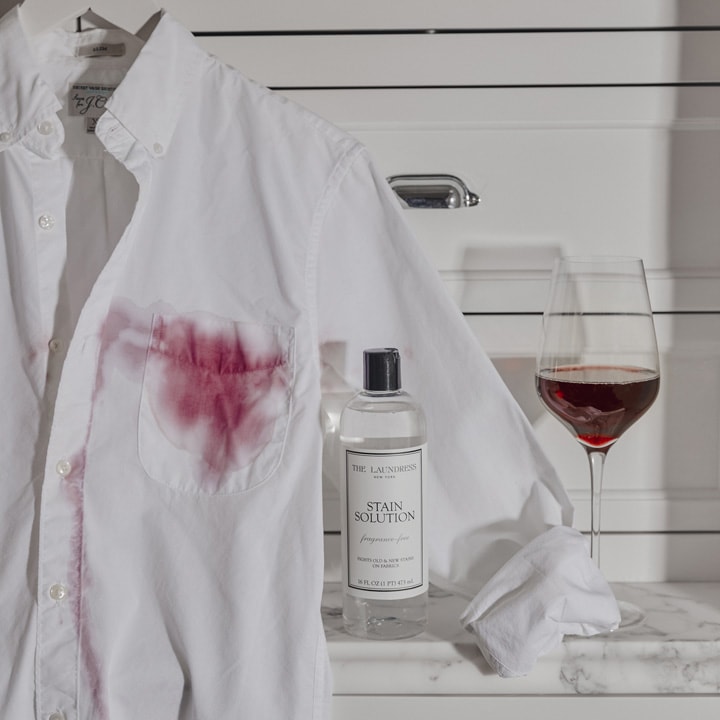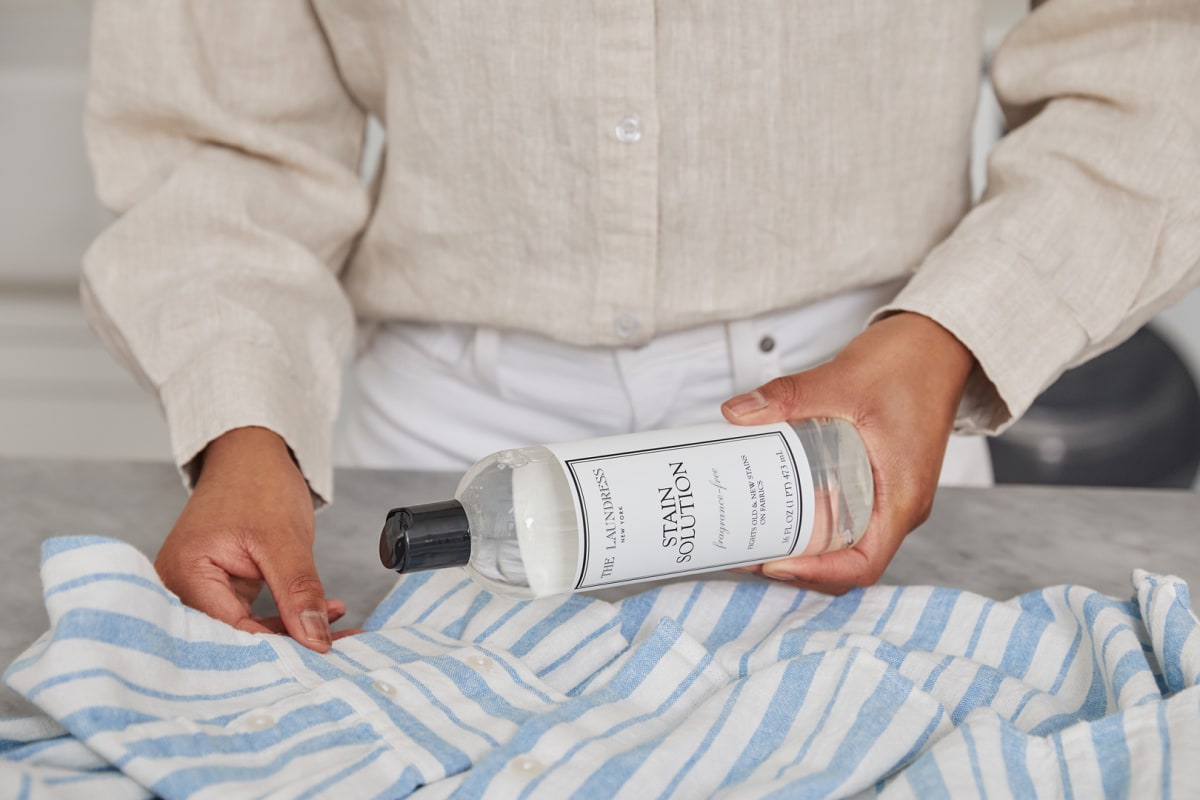- | 9:00 am
Stain removal is the unsung hero of sustainable fashion
Fast fashion makes it too easy to discard clothes when you stain them. By becoming a stain-removal expert, you can buy higher-quality clothes you really love.

We’ve all been there. We’re eating a delicious bowl of pasta when tomato sauce splatters on our favorite white button-down shirt. After a lot of soaking and scrubbing, the big, red splotch is still there. So we toss it in the trash, where it will eventually be dumped in a landfill.
For decades, fast fashion has ruled the apparel industry, churning out clothes so cheap they have effectively become disposable. By some estimates, consumers wear garments only 7 to 10 times before discarding it. As a result, a truckload of clothes end up in a landfill every single second. This excessive consumption is driving the planet to the brink of collapse: Fashion is now responsible for 8% of global carbon emissions.
The answer is for us to buy fewer articles of clothing. This means selecting pieces that are durable and designed to last years, if not decades. This often means buying better quality, more expensive garments than we might be used to. Investing in better clothing means developing a new set of skills around taking care of them, so they stay in good shape through the spills and messes of everyday life. In other words, we all need to become experts in stain removal.
The good news is that there are companies that are entirely devoted to helping people take care of clothing. Steamery, for instance, sells steamers, shavers that remove pilling, and stain removers, all designed to prolong the life of clothes. The Laundress formulates detergents, including stain solutions, that keep fabrics in good shape. The brands have extensive expertise in getting tough stains out of clothing, and we tapped them to explain how to get rid of even the trickiest stains.

THE SCIENCE OF STAINS
On the surface, the science of stains is simple. They occur when a foreign substance ends up on the surface of a garment, saturating the fabric. What’s complicated is how each particular substance interacts with the texture of the fabric. Many people rely on dry cleaners to tackle hard stains, but it’s possible to handle almost any stain at home says Hannah Yokoji, brand director of The Laundress. “Dry cleaning isn’t all that good for the planet either,” she says. “It’s empowering to know you have all the tools you need at your fingertips.”

When it comes to difficult stains, there are two main culprits, says Yokoju. First, there are color-rich stains, such as tomato sauce, coffee, fruit, and ink. Then, there are oil-rich stains, like salad dressing, a juicy hamburger, and makeup.
The severity of a stain also depends on the material of a garment. Frej Lewenhaupt, founder and CEO of Steamery, says that the more absorbent a textile is, the more the stain will set in. Plant-based fibers, like cotton, linen, and viscose (which is made from wood pulp), are porous, which makes them more prone to absorbing substances. Meanwhile, Lewenhaupt says that stains on animal-based fibers, like wool and cashmere, tend to be more manageable. “These fibers have the same properties as our hair, which makes it easier to wash out,” he says.

On the other end of the spectrum, synthetic fibers like nylon and polyester tend to wick away substances. “I wouldn’t suggest that you switch to a synthetic wardrobe just to avoid stains,” says Lewenhaupt. “There are many other environmental concerns with synthetics, including the fact that they are made from fossil fuels and shed microplastics.”

THE ART OF STAIN REMOVAL
The key to garment care is using a cleaning agent that will effectively dislodge and remove the stain, without harming the fabric. In all cases, Lewenhaupt says that the more quickly you address the stain the more likely you are to remove it effectively. Your goal is to prevent the substance from getting absorbed by the fabric at all. This means using a napkin to dab or wipe off the stain immediately. “It makes a huge difference if you try to get the stain out right away, before it has a chance to get stuck in the fiber,” he says.
Then you need to think about what chemical you need to remove the stain. Most fabric-care companies offer stain solutions that contain different enzymes, which are biological agents that break down the molecules in stains. Specific enzymes target proteins (such as blood and a wide range of foods, including eggs and meat), tannins (such as wine), and oil-based stains.
Pre-treating your garment with a stain remover will lead to the greatest success, says Yokoji. And it will work even better if you use a stain brush, which gently helps the solution to penetrate the fabric. But it’s crucial not to leave the enzymes in the fabric for too long, particularly on brightly colored garments because it could lead to discoloration. “The stain has basically dyed the fabric temporarily,” she says. “So the enzyme is breaking down the stain. If you leave it in too long, it could also break down the actual dyes in the fabric.”

Enzymes are not the only chemicals that will release stains; there are other household products that might do the trick. Hydrogen peroxide is good at breaking down strong chemical bonds in stubborn, color-rich stains such as ink and wine. Acids, like vinegar and lemon juice, activate molecules in stains, so they pull away from the fabric. They will work to remove coffee and tea stains, along with mold and mineral deposits. Then there’s baking soda and cornstarch, which work by absorbing the molecules of the stain. These tend to work well on food stains, such as grease and ketchup.
Once you’ve pretreated your stain, it’s time to wash it. But it’s important to think about the temperature of the water you’re using. Hot water tends to work best on oil-rich stains since it the heat breaks down the oils. But in many other cases, such as with blood and food-based products like tomato sauce, warm water will bake the stain into the fabric. So, it’s critical to use cold water in these cases.
Lewenhaupt and Yokoji both maintain that developing stain-removal skills should change your shopping behavior. You might feel more comfortable buying a pricier outfit or a lighter color because you know you’ll be able to keep it in good shape, even when a stain happens. Ideally, this means you can skip fast fashion altogether and buy more durable garments that you really love.







































